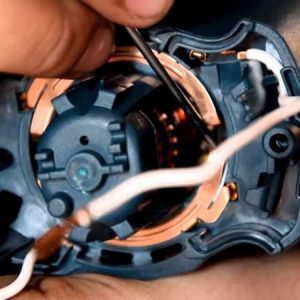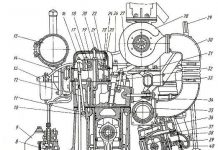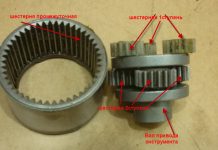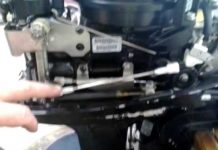In detail: do-it-yourself grinder repair replacing the bearing in the gearbox from a real master for the site my.housecope.com.
site of home craftsmen, professional advice and useful information for everyone who loves tinkering and knows how to work with their own hands
A detailed photo report on replacing the bearings of an angle grinder armature (grinders) 1400 W 220V.
The angle grinder got its nickname “Bulgarian”Back in the days of the Soviet Union. Because, at that time, this instrument was manufactured and supplied from Bulgaria. Bulgarian in the arsenal of home tools, the most versatile and multifunctional assistant. Bulgarian in operation, it is exposed to strong and uneven loads and long periods of operation, therefore, malfunctions occur more often than with other power tools.
In my Bulgarian when turned on, an extraneous sound and increased vibration appeared. It is more expensive to operate a tool with such characteristics further.
Grinder repair start by unscrewing the four screws of the gearbox cover.
Prying off with a screwdriver, remove the gearbox cover assembly with a secondary shaft and gear. The bearing of the output shaft turned out to be working, without backlash and jamming.
But the front armature bearing - completely crumbled. The bearing balls were in the gear grease and the small gear retaining ring was worn on one side. To replace the front bearing, you must first unscrew the armature contact brush caps and remove the brushes.
Then we unscrew the four screws securing the grinder gearbox to the stator and remove the armature together with the gearbox housing.
To remove and install the armature gear retaining ring, you need to make a simple tool. For this I used old scissors. The ends of the scissors on emery were ground off, as in the photo.
| Video (click to play). |
This is the view I got from my retaining ring. For the convenience of mounting the retaining ring when assembling the reducer, the ends of the scissors were heated red-hot with a gas burner and bent at right angles to the plane of the scissors. Then they were again heated and cooled in engine oil.
After dismantling the armature gear, I removed the armature from the gearbox housing. This is the view of the front armature bearing.
We buy new bearings and a retaining ring in the store, continue grinder repair.
The outer cage of the armature bearing is removed from the gearbox housing by lightly tapping on a metal screwdriver inserted into the groove of the cage from the inside of the gearbox housing. It is important not to skew the cage when pressing out.
But the inner bearing race was tightly seated on the armature shaft.
To dismantle it, I used a standard tapping tool holder.
Studs were unscrewed from it for rotation when threading. And the rod holder itself is installed on the bearing race, so that the screws for fixing the rod fit into the groove of the bearing race. Then tighten the screws evenly on each side and thus securely attach the holder to the holder. Now we grab the puller with the paws of the tool holder and remove the holder from the shaft.
This is the view of the front bearing of my armature grinders.
New bearings must be filled with grease. To do this, you need a sharp awl, Litol 24 grease and a mandrel for mounting bearing caps. To lubricate the closed bearing, you need to remove the cover by prying it with an awl, as in the photo.
Now we fill the bearing with grease and put the cover in place.
To put the cover in the bearing without damage, you need to select a mandrel in diameter slightly larger than the outer diameter of the bearing cover. I used a socket wrench head.
The bearings are lubricated. Press the front bearing into the gearbox housing using the outer race of the old bearing and fix it with a flange.
At the anchor, the anchor collector is cleaned with P1000 sandpaper. With a stationery knife, carefully, without much pressure, we clean the paths between the collector lamellas. And after these operations, we carefully wipe the collector with a cotton napkin moistened with white spirit or other solvent.
Next, you need to press the armature shaft into the inner race of the front bearing. To do this, place the gearbox housing on a wooden surface with the bearing facing up. We insert the armature shaft into the bearing cage from above and lightly tap it through the mandrel, along the rear armature bearing, put the armature in place.
We put a small gear on the armature shaft. If, after installing the gear, the groove for the circlip extends beyond the end of the gear, then the installation is correct. We put the retaining ring in place.
If the groove does not come out due to the end of the gear or is halfway out, the shaft must still be seated in the housing.
After these operations, remove the old rear bearing from the armature shaft and install a new one. We place the armature with the gearbox in the stator and tighten the four screws securing the gearbox. We check the shaft for rotation. The shaft should rotate easily without jamming in the bearings. We put in place the contact brushes and screw their covers. Now we put a special lubricant for angle grinders in the gearbox grinders and put in place the cover of the gearbox with the secondary shaft.
Tighten the four fastening screws and check grinderby plugging into the network.
Bulgarian should quickly gain momentum and work without extraneous overtones. On this grinder repair can be considered complete. Good luck with your work!
Do-it-yourself grinder repair is a completely solvable task. The main thing is not to rush, to understand the structure, remember all the circumstances under which it broke down, determine what could have worn out during operation, make diagnostics and start repairing it.
Angle grinder (angle grinder) is called a grinder. The name of the instrument is due to the fact that it was produced by the Eltos-Bolgarka plant in Plovdiv. It is designed to perform work on grinding or trimming hard material:
Performs well sharpening of the tool.
Nowadays, a grinder is a very necessary tool, so almost everyone has it.
There are grinding machines of different power: from 500 W to 2500, depending on the thickness of the wheel - from 115 mm to 230 mm. The most popular in the work are angle grinders with a power of 1.2 W, and the most used disc is 125 mm thick.
Every year the choice for this construction power tool is becoming wider, but the operating rules hardly change. And even if you always adhere to them, sooner or later there are malfunctions in the mechanism that you can try to fix with your own hands, collecting everything you need to repair the grinder.
- rotor - a part of an electric motor that rotates during operation and is speed-controlled, also called an anchor;
- collector - the place on the rotor where the control winding wires are located;
- brushes - parts that serve as conductors of current from the cable to the collector winding;
- reducer - a mechanism that acts as a drive from a rotating rotor to a rotating disk, consists of a spindle, a bearing, two gears (large and a shaft gear);
- stator - the part of the electric motor in which the rotor works;
- grinder cooling impeller;
- start button;
- network cable with electric drive;
- protection casing;
- grinder body;
- additional handle.
All these details can be divided into two parts:
How to disassemble a grinder? Not such a difficult process. This does not require special knowledge, but everything must be done carefully and carefully. Each owner needs to know how to disassemble any working tool, because from time to time it needs to be cleaned internally from dirt and trapped dust, and its durability depends on it.
At the present time on the market, you can choose for yourself a different type of grinder, which differ in performance, size, quality. Manufacturers are also different. Whichever model of grinder you buy, everyone has the same assembly model.
Dismantling the grinder will require few tools, you just need a regular screwdriver or a reversible screwdriver with a ratchet mechanism.
Having prepared a screwdriver, you can start disassembling:
- We unscrew the screws from the body and remove one side of the product.
- Remove the nut that holds the disc, unscrew the bolts securing the protective casing.
- We remove the brushes.
- Disconnect the wires from the engine.
- We unscrew the bolts that secure the gearbox inside, and very carefully remove it, and the rotor is also removed with it.
- We unscrew the bolts that hold the stator and remove it.
- We put the grinder back, put everything in place in the reverse order and fasten it.
When disassembling the grinder, it is important to remember the order in which the parts are removed in order to assemble them correctly.
In the event of a malfunction, first of all, it is necessary to exclude elementary breakdowns:
- The grinder does not turn on. The angle grinder suddenly became faulty - it stopped turning on. In this case, you need to check the serviceability of the outlet, then the plug and the power cord, perhaps the drive simply does not work due to the fact that no current flows into the product.
- The cable and plug are intact, but the drive does not work. You need to check the start button. It is easier to repair the grinder switch by purchasing a new button and replacing it. Since it rarely needs to be repaired - basically, the plastic rod of the switch breaks inside. If you want to experiment, you can disassemble it by numbering the contacts, and put everything back together in place so that after assembly does not happen a short circuit.
- The above parts are intact and the angle grinder doesn't want to work - so it's time to check the brushes. Perhaps it's time to change them in the grinder. The brushes are constantly heated from work, so they wear out quickly and more often than other parts need to be replaced, and in pairs.
Having excluded all minor breakdowns, it is necessary to understand why the tool does not want to turn on, and how to repair it. Most likely, the malfunctions are serious and require additional knowledge. This happens if:
- the body is deformed;
- one of the bearings is seized;
- the armature or stator does not work;
- the teeth of the gear wheel of the reducer are broken or worn out;
- the collector is out of order;
- the sensor of the control electronics does not show signs of life.
If it is determined that a malfunction has occurred in the mechanical part of the grinder, then you need to pay attention to the condition of the large gear located on the shaft, and to the bushings. If the teeth are partially worn out or the shafts are wobbling, they must be replaced immediately.
 The most common breakdowns
The most common breakdowns
Grinder malfunctions happen quite often. Everyone who works with this tool knows about this. What goes wrong most often?
Just one awkward pressing of the spindle lock button while the disc is rotating will break it. It can sometimes be broken if used to remove a jammed disc. To prevent this from happening, you need to use an open-end wrench inserted into the special holes near the place where the disc is attached.
It mainly occurs when a jam occurs. If a rumble is heard in the gearbox, this is a symptom of just such a malfunction.When more than one tooth is broken at the gear, the grinder will not be able to cut the required material.
In order for the tool to continue working, it is necessary to change the gears, and everything, and even the bevel wheel. Before going to the store for spare parts, remember the manufacturer's firm, the model and the power of the product.
This type of breakdown happens with angle grinders, which work in places where there is a lot of dust, and when they are given rest, they are left on the ground. Dust that gets inside will damage the winding. Large loads, especially for a small power grinder, turn into a motor breakdown.
If the grinder is used for cutting materials that create a lot of dust, then it is recommended to cover the ventilation holes with something.
The weakest link, and not only among the grinders, are the bearings. A high speed will quickly wear out the mechanism. The good news is that changing the bearing is easy. Replacing a sprinkled bearing at a grinder must be done in time so that a breakdown does not happen that cannot be fixed.
This breakdown is easy to determine when the angle grinder has turned on, but the disc revolutions are too intense and differ from normal operation, which means that there is a turn circuit in the stator on the winding. Stator breakdown is considered the most serious, and special skills are required to eliminate it. When you have doubts about yourself, it is better to turn to professionals so that you do not have to buy a new instrument later.
If the decision to fix it yourself is made, it begins with cutting off the frontal parts of the winding, all the remnants are removed. The next step is to make a new winding according to the template. It should be identical in the number of turns, with the same density, and made of wire of the same thickness as the previous one.
Repair of the grinder gearbox mainly consists of replacing the gears. If the disc gear breaks, it is difficult to replace it because it is very firmly fixed. It is easy to disassemble the gearbox:
- you need to unscrew the nut from its side;
- gently take the rotor body in a vice and knock out the gearbox housing with light blows;
- change the position of the clamped rotor and knock out the bearing through a wooden board;
- unscrew the gear from the shaft.
The speed regulator is not present on all models of grinders. When the angle grinder is used for cutting, it is, in principle, not needed, but if grinding is carried out, it is simply necessary. If suddenly it stopped working, then, most likely, the board burned out, which must be removed and bought the same in a power tool store for further replacement.
Self-repair of the grinder is not always feasible. If suddenly something does not work out or everything is not clear, it is better to contact the service center.
Before it completely breaks down, the angle grinder signals the beginning of a malfunction.
Pay attention to the work of your assistant: you should be alerted if:
- the brushes began to spark too much;
- the grinder is heated during work;
- the motor hums inside the case when the tool is turned on;
- the vibration of the body has become much greater during work;
- the grinder's gearbox is bursting inside;
- you hear the sound of a creak of bearings during spin-up or periodic wedging when the rotor shaft rotates;
- The angle grinder has smoked, or an uncharacteristic burning smell emanates from it.
In order not to buy a new grinder, you need to be careful about the operation of the tool. In case of any deviations from the usual work, start troubleshooting, determine the cause and repair the power tool.
The service life of the grinder directly depends on the owner's care for it. Each instrument needs good care, then it will work properly for a long time.
Any grinder will warm up during operation, but in order to postpone the repair of angle grinders for a long time, you must adhere to some rules in the work:
- Do not overload the tool to avoid overheating and smoke.
- Do not put pressure on it while working.
- Timely clean and lubricate the necessary parts inside the case.
- If malfunctions are noticeable, discontinue operation and inspect for malfunctions.
- Replace wearing parts in a timely manner.
- If the grinder smokes, immediately stop working and do not turn it on again.
- Do not use the tool when processing wood-type material.
- Hold the grinder firmly during work so as not to drop or damage.
Adhering to the listed simple recommendations and rules in working with a tool called a grinder, you can extend its life longer than provided for by the warranty period.












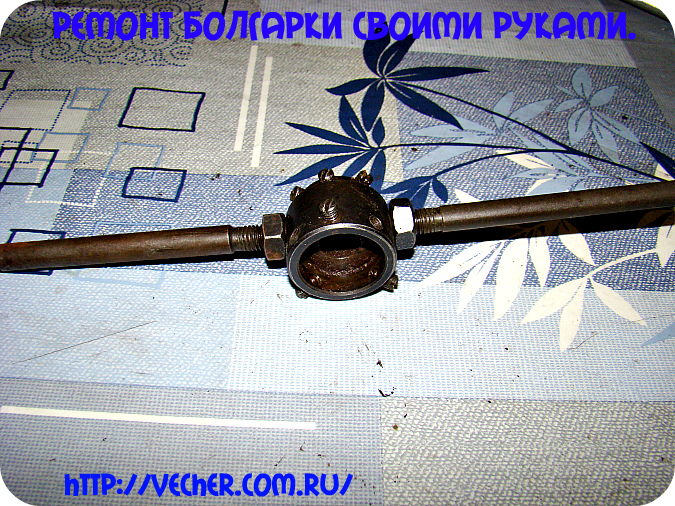






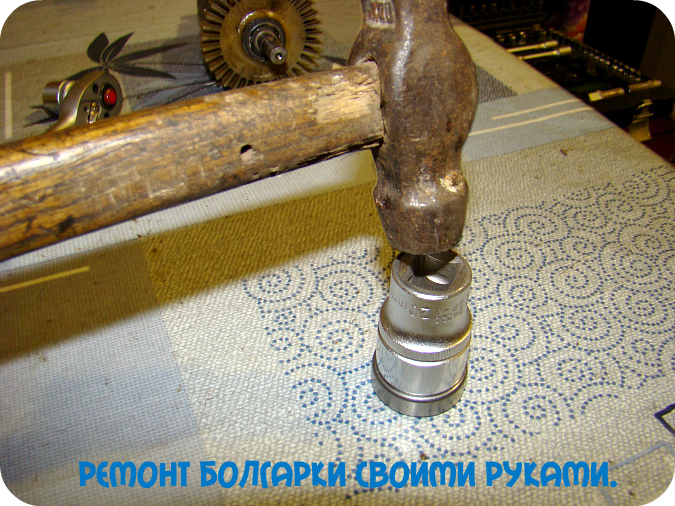








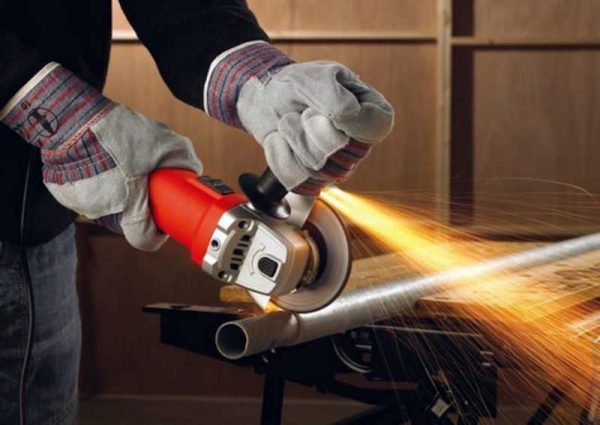
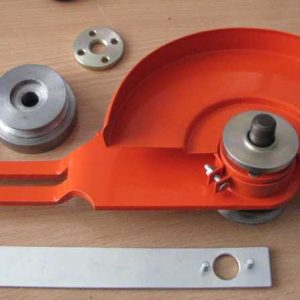
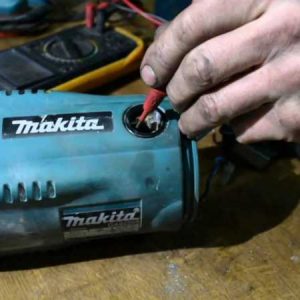 The most common breakdowns
The most common breakdowns